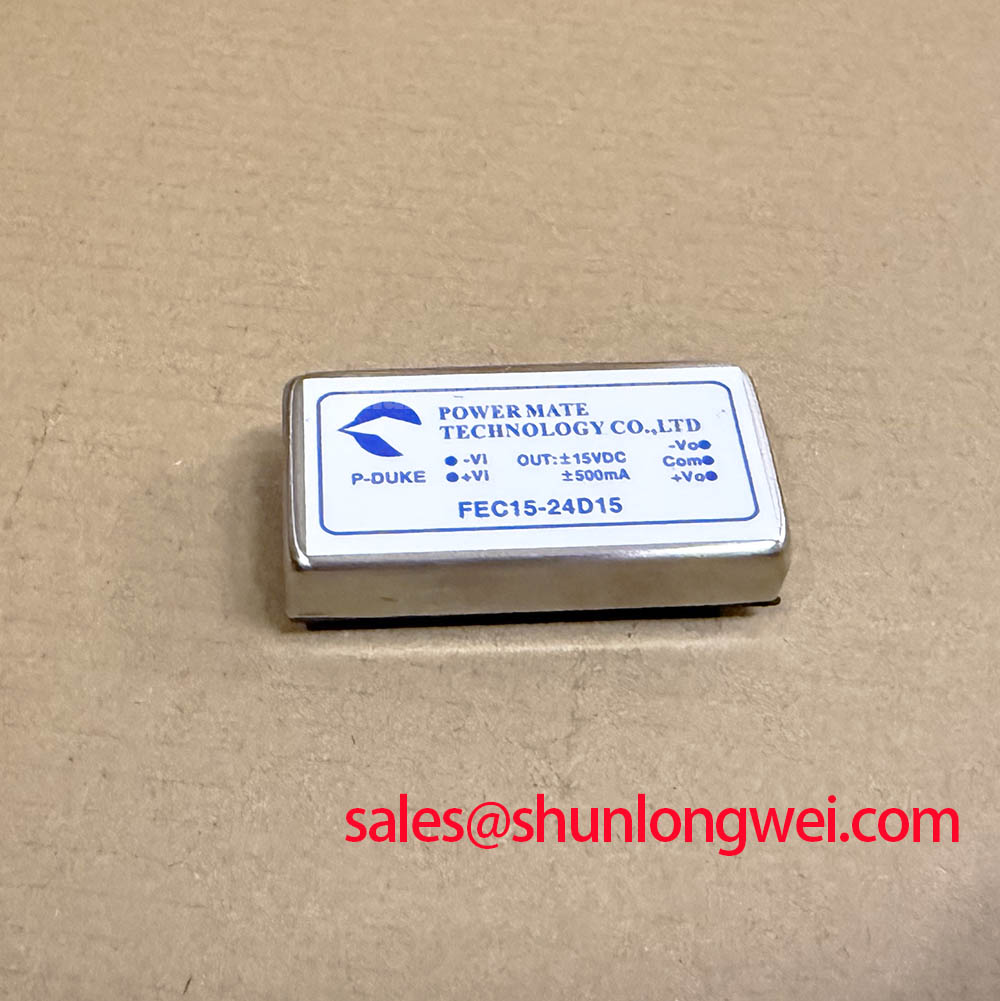FEC15-24D15 | 15W Isolated Dual-Output DC-DC Converter for High-Reliability Systems
The FEC15-24D15 is a high-density, board-mountable DC-DC converter engineered for applications demanding stable, isolated power within a compact footprint. It delivers a precisely regulated ±15V output from a wide 24V nominal input, making it an essential building block for robust industrial, communication, and instrumentation systems. Its design philosophy prioritizes efficiency, reliability, and ease of integration, directly addressing the core challenges faced by power system designers.
- Power-Dense Performance: Delivers a full 15W of isolated power from an industry-standard 1" x 1" package, enabling significant space savings on the PCB.
- Clean Analog Power: Provides a stable, low-noise dual ±15V output, ideal for powering operational amplifiers, data converters, and other sensitive analog front-end circuitry.
- System Resilience: Operates reliably over a wide 2:1 input voltage range (18V to 36V), maintaining regulation during input voltage sags and swells common in battery-powered or industrial environments.
- Thermal Excellence: Achieves typical efficiency of 88%, minimizing power loss as heat. This allows for operation from -40°C to +85°C without the need for an external heatsink in most applications.
- Built-in Safety: Features continuous short-circuit protection with automatic recovery, safeguarding both the converter and the downstream load from fault conditions.
Key Performance Parameters
The following table provides a quick reference for the FEC15-24D15's critical electrical and mechanical specifications. For a comprehensive list of specifications and performance curves, you can download the full FEC15-24D15 datasheet here.
| Parameter | Value |
|---|---|
| Input Voltage Range | 18 - 36 VDC (24V Nominal) |
| Output Voltage | ±15 VDC |
| Output Current | ±500 mA |
| I/O Isolation Voltage | 1500 VDC |
| Efficiency (Typical) | 88% |
| Switching Frequency | 300 kHz (Typical) |
| Operating Ambient Temperature | -40°C to +85°C |
| Package Dimensions | 1.0" x 1.0" x 0.4" (25.4 x 25.4 x 10.16 mm) |
Engineered for Precision: Core Application Areas
The specific characteristics of the FEC15-24D15 make it an optimal choice for systems where signal integrity and operational stability are non-negotiable.
- Industrial Automation: In PLCs and distributed control systems (DCS), the 1500VDC isolation is paramount. It breaks ground loops, protecting sensitive analog input/output cards from noise and high potential differences found on the factory floor. It also provides clean power to the gate drive circuits that control motor drives.
- Data Acquisition (DAQ) Systems: The regulated, low-ripple ±15V outputs ensure high-fidelity measurements by providing clean power to ADCs, DACs, and sensor conditioning circuits, preventing power supply noise from corrupting critical data.
- Test & Measurement Equipment: Benchtop instruments and portable testers rely on stable power rails for repeatable and accurate results. The FEC15-24D15's wide input range and tight regulation provide the necessary foundation for such precision.
Engineer's FAQ for the FEC15-24D15
Based on our experience, here are answers to common design questions regarding this component.
1. Does the FEC15-24D15 require external components for operation?
For basic functionality, the module is self-contained. However, to meet stringent EMC standards like CISPR32/EN55032 Class A or B, an external input pi filter consisting of capacitors and an inductor is recommended. The datasheet provides a reference circuit that serves as an excellent starting point for your layout, minimizing conducted emissions and enhancing input noise immunity.
2. The datasheet says 'no heatsink required.' Under what conditions does this apply?
This claim is a direct result of the converter's high 88% efficiency, which ensures that only a small fraction of the processed power is dissipated as heat. The module can operate at full 15W load up to a specific ambient temperature (typically +65°C, as shown in the datasheet's derating curve) with only natural convection cooling. Beyond this point, the maximum output power must be derated. While no heatsink is needed for most scenarios, a solid understanding of system-level thermal performance and local airflow remains essential engineering practice.
If your design pushes the boundaries of power or temperature, or if you need assistance with EMC filter design, please contact our technical team for expert guidance.






